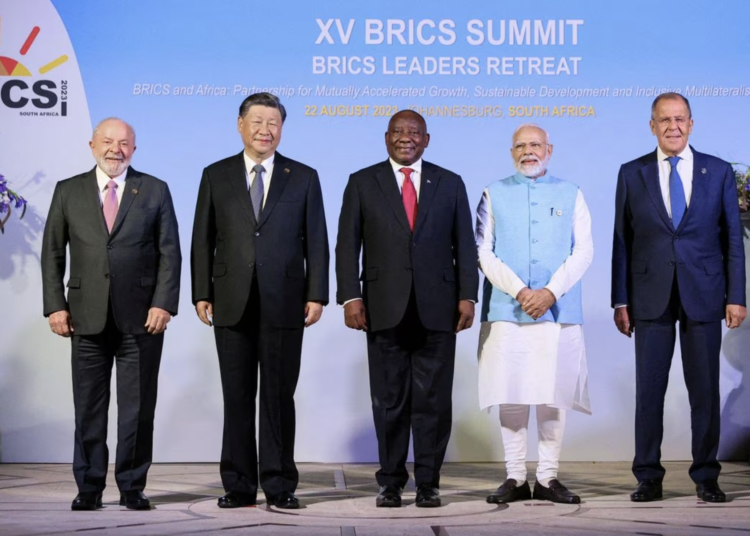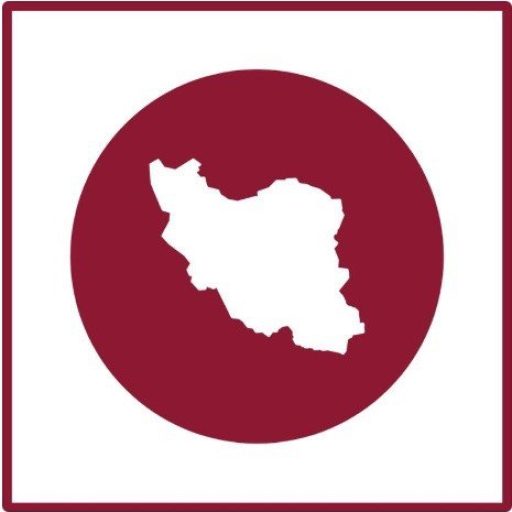The leaders of the BRICS member countries convened in Johannesburg, their discourse orbiting the conception of a fairer world. Among the assembly was virtual presence of Russia’s president, Vladimir Putin, presently accused of launching war against Ukraine. He directly attributed the spark of the Ukrainian impasse to the West’s quest for dominance. Proclaiming the BRICS consortium’s objective to cultivate a fair global system dictated by international laws and the UN Charter.
China’s leader, Xi Jinping —a character of intense global scrutiny— championed for the BRICS entities to assume a proactive position in brokering and advancing political solutions to touchy matters. In a barely-veiled slight at the West, Jinping insisted that BRICS members should resist economic coercion, directing focus toward trade synergy.
Equally engaging the topic of the Ukrainian conflict and the demand for international structural modifications is Brazil’s President, Lula da Silva. Establishing his contention, he narrated, “The Ukraine war exposed the incompetence of the United Nations Security Council.” In line with his eastern counterparts, da Silva accentuated the gravitas behind the BRICS’ part in the evolving world, supplementing “BRICS provides a platform conducive to scrutinizing peace and security.”
Reflecting on the past twenty-two years since Jim O’Neill devised the term “BRIC” as a representation for potential global powerhouses, and its transformation into “BRICS” thirteen years later, it’s apparent that this acronym transcends its original inference of emerging powers. Currently, BRICS is driven to engineer a vibrant consortium of pioneering nations within the emergent global scene, laboring towards enhancing their political and economic interconnectedness in confrontation of contemporary global challenges.
Ultimately, BRICS is perceived as the principal messiah meant to resolve non-western dilemmas, offering an alternative to the International Monetary Fund, World Trade Organization, the European Union, and NATO. If BRICS hadn’t materialized, it is plausible that a comparable concept or association would have been conceived, with the purpose to devise novel solutions extrinsic to the traditional and existing boundaries.
Nevertheless, in spite of the brilliant outlook for BRICS member countries, the organizational crossroads and political maturity of BRICS are rife with ambiguities. Queries linger surrounding BRICS’ attainment of political maturation, whether BRICS can morph into a political and security federation, and even the sustainability of BRICS’ present economic synergy. The responses reside in a myriad of conditions and variables. Essentially, despite the grandiose allure surrounding BRICS, the coalition faces several prospective scenarios.
BRICS countries, emblematic of pivotal continents acknowledged as both propellers of global expansion and sources of paramount global problems, occupy a leading role in addressing global challenges. Links of political, economic, digital, cultural, and educational dimensions are proliferating between BRICS members. The societies of BRICS are pioneering global future planning. Enterprises, both public and private, from nations such as China, India, Brazil, Russia, and South Africa are executing global development initiatives. However, will the political resolve persist to bolster the extension of this crucial connection?
Despite the relatively similar stance of BRICS member countries toward the Ukraine conflict, BRICS does not yet constitute an organization that dictates the foreign policy postures of its members. Up to this point, BRICS has essentially functioned as an advisory group and lacks an organized structure to delineate voting rights distribution within the group. The trajectory of BRICS as a political force on the global stage hinges on its ability to surmount challenges such as political pluralism, internal discordance, and sovereignty disputes among its members, which encompass regional competitiveness, territorial disputes (e.g., India and China), and hesitance to yield even a fraction of their autonomy in favor of the alliance. These hurdles appear almost insuperable unless the group adheres to a functionalist model, where solid and stable economic ties within the group eclipse potential internal and external political hurdles.
The political ambitions of BRICS extend beyond its synergistic economic progress, necessitating a degree of political sanctity and security cohesion that often proves more elusive than economic integration. Any movement toward political amalgamation primarily seeks to bolster the alliance’s capabilities in terms of fostering peace, leading a unified front in foreign policies, and guaranteeing the security of its constituents. While BRICS is in the process of refining its structure, a missing piece of the puzzle remains the absence of supranational institutions with the authority to supersede national establishments within the group. The shaping of unified solutions to issues of security, the orchestration of synchronized foreign policies, the establishment of joint rapid reaction military enterprises, and the integration of adjacent regions remain elusive pursuits on the horizon for BRICS. Economic amalgamation’s path may lie in actions such as dismantling trade obstructions, boosting intra-group commerce, establishing a joint fund and a common currency or other mechanisms that ensure amplified linkages across commodity, labor, and capital markets. Yet, the conundrums presented by political and security matters are less amicably resolved.
With China and India representing the Asian continent, Russia straddling the Eurasian spectrum, South Africa emblematizing Africa, and Brazil symbolizing Latin America, BRICS brings together members from disparate geopolitical terrains. Each area is subject to its own specific set of security conditions, sparking the necessity of dedicated regional institutions.
In essence, national government skepticism surrounding the global potential of BRICS, the riddle of integrating their political and security governance with BRICS, coupled with each nation’s pre-existing foreign commitments, precludes the formation of intertwined transnational institutions under the BRICS banner.
Each BRICS member leans toward prioritizing its own geopolitical and economic incentives within the fluidly transitioning and unpredictable global landscape, participating in a broad array of burgeoning regional and international settings, alliances, and clubs. It can, therefore, be stated with some degree of assurance that the possibility of security integration within BRICS remains at the lowest conceivable level.
Despite the BRICS membership championing a multipolar world, this global structure is characterized by what is known as a divergence paradigm. The future of BRICS in its customary form of periodic leaders’ assemblies is uncertain, with some experts predicting a final summit in 2030 due to political and security amorphisms. The initial generation of officials that established the group have exited the stage, and their successors, although potentially willing to fortify BRICS, have no assured commitment to this objective from the following generation.
China’s ascension and its subsequent influential foothold within the group, with regard to political and economic potency, and the challenging positions from the United States toward China and Russia, conjure an uncertainty that has reverberating impacts on the BRICS group, causing its members to be cautious of future commitments.
The political destiny of BRICS also depends significantly on India’s outlook and, moreover, whether the West can successfully incorporate New Delhi into its upcoming establishments and polarize India against China. Although India has executed independent foreign policy and managed to balance cordial relations across a wide spectrum of Western counterparts, Russia, and China, the trajectory of India’s BRICS affiliation remains uncertain.
Parameters and uncertainties concerning economic amalgamation
Presently, BRICS is recognized as a platform for dialogue on shared global issues, bearing close resemblance to the Group of 7 industrially advanced countries. However, setting it apart is its tremendous economic potential: the five constituent countries of Brazil, Russia, India, China, and South Africa command an approximate global GDP share of 15-20%. These nations host 40% of global populace, forming the most extensive global marketplace. Being home to the impending economic juggernauts of the globe, China and India, poised to dethrone the United States in a near future, BRICS presents considerable potential. BRICS nations feature amongst each other’s top ten trade partners and have embarked on developing a mutual currency. Indeed, the BRICS economic amalgamation initiative may unlock unprecedented potential horizons.
However, acknowledging the magnitude of national, regional, and global challenges, impediments to BRICS’s economic amalgamation are abundant.
Peering into a potential future
Overall, BRICS bears likeness to yet another non-aligned group in the grand scheme. Nevertheless, despite the aforementioned uncertainties, the endeavors of the current crop of BRICS leaders cannot be entirely dismissed as ineffectual. In the relentless pursuit of its objectives, BRICS has employed a multilevel strategy, forming a stratified membership structure within this alliance consisting of member states, BRICS Plus, and friends of BRICS. This suggests that the future of BRICS stretches beyond the constituent quintet, embracing the larger global sphere.
Albeit the intricate dynamics internal to each BRICS member, alongside the fluctuations within their regional environment and the global matrix result in the slim chances of a BRICS nucleus expansion, the process of BRICS adoption of openness and inclusivity is multifaceted.
The forthcoming years may witness a fluctuation in membership, with potential exits, but the fortification of BRICS institutions and the concurrent surge in BRICS membership will likely persist, albeit at a slow to moderate pace. Instinctively, each nation might lean toward drawing its allies into the group, intensifying internal factional bonds. Russia, for instance, is supposed to invite Iran into the fold in order to shore up its Eurasian agenda, a development likely perceived as a significant political win for the Iranian government. Nevertheless, BRICS ought to be viewed as a collective for thought exchange and counsel among emerging powers.






